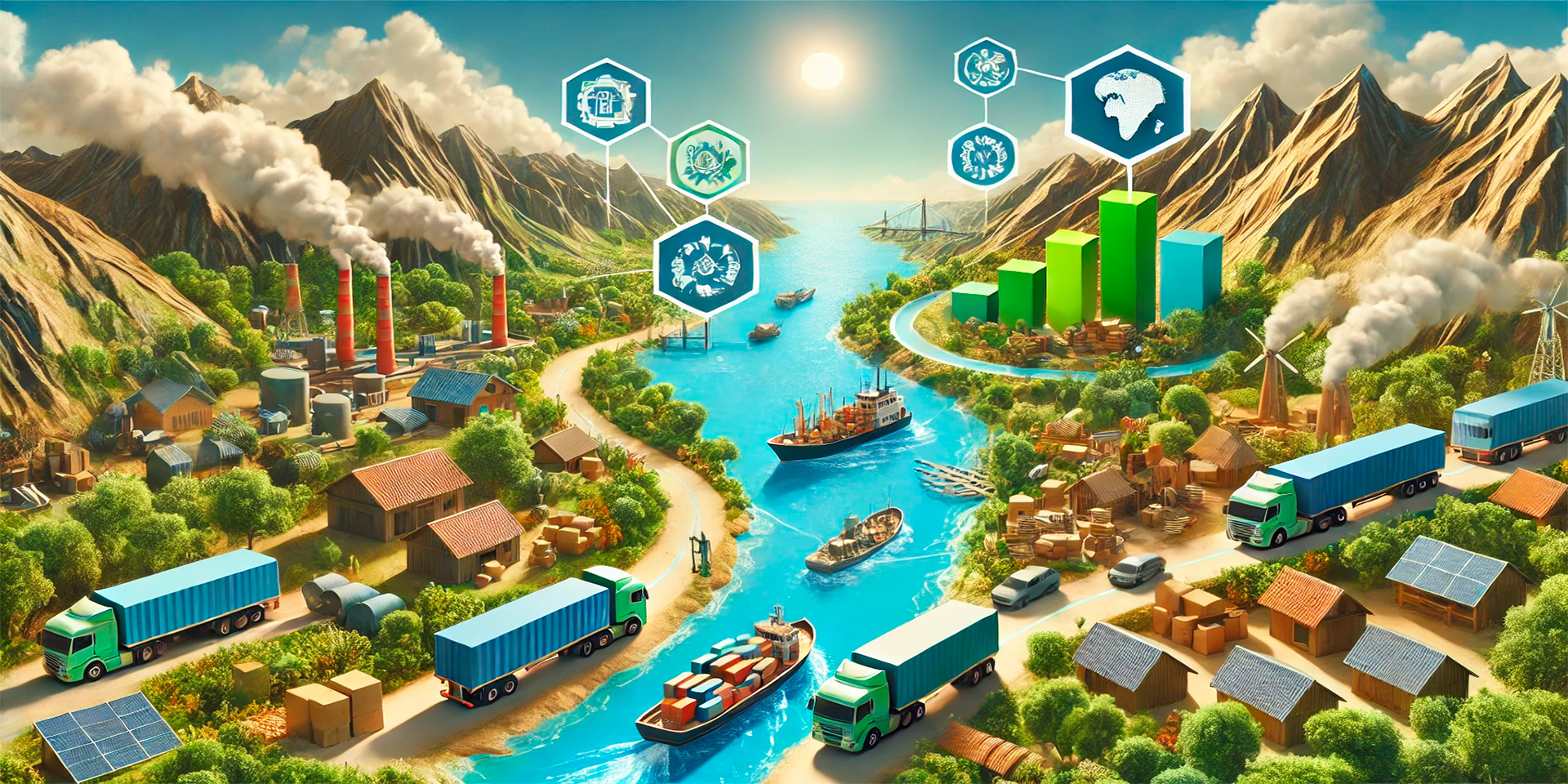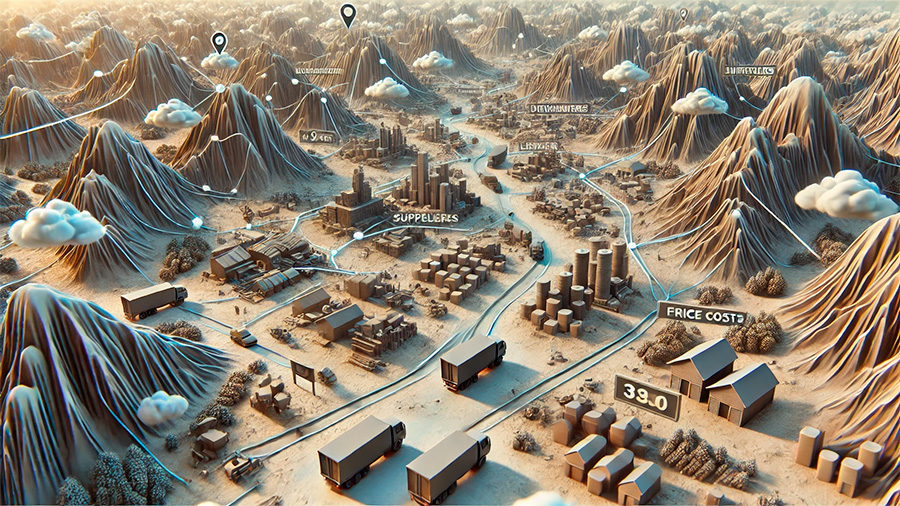
Overcoming the High Cost of Goods in Remote Areas: Solutions for Economic Sustainability
Geographic remoteness poses significant challenges for communities, particularly when it comes to the cost of goods and services. For residents of remote areas, essential items such as food, fuel, and household supplies often come at a premium due to transportation costs, logistical difficulties, and limited infrastructure. These factors make it more expensive to deliver goods, and the additional costs are passed down to consumers, creating an economic burden on those who already have limited access to resources.
This article explores how geographic remoteness raises the cost of goods and services, the factors that contribute to price inflation, and the economic impact on remote communities.
How Geographic Remoteness Affects the Cost of Goods
The cost of goods in remote communities is largely influenced by the challenges associated with transporting products over long distances. Geographic isolation makes it difficult to move goods efficiently, and the further a community is from major transportation hubs, the higher the price they pay for everyday items. Additionally, the lack of infrastructure and the logistical complexities of delivering to remote areas further exacerbate the issue.
1. Increased Transportation Costs
Transportation is the single biggest factor driving up the cost of goods in remote areas. When goods must travel long distances from suppliers, the cost of shipping increases dramatically. Fuel expenses, vehicle maintenance, and driver wages all rise with distance, and these additional costs are reflected in the higher prices consumers pay in isolated communities. The more remote the location, the higher the transportation cost, especially for essential goods that require frequent restocking.
Key factors in higher transportation costs:
- Fuel prices: Remote deliveries require more fuel, and rising fuel costs can have a direct impact on the final price of goods.
- Extended delivery times: Delivering to remote communities often takes longer, increasing labor costs and vehicle wear and tear.
2. Logistical Challenges
Logistical challenges in remote areas also contribute to higher prices. Limited infrastructure, such as poorly maintained roads or a lack of rail or sea access, can make deliveries more difficult and less frequent. Remote areas often require specialized vehicles, such as off-road trucks or small planes, to navigate difficult terrain. These logistical complexities drive up the cost of transporting goods, leading to higher prices for consumers in these regions.
How logistics affect pricing:
- Poor road conditions: Rough or unpaved roads increase delivery times and maintenance costs for vehicles, raising transportation expenses.
- Specialized transport: In areas without adequate infrastructure, companies may need to use more expensive transport options, such as helicopters or boats, to deliver goods.

Supply Chain Limitations in Remote Areas
Beyond transportation, supply chain limitations also play a role in raising the cost of goods in geographically isolated communities. Remote regions often face challenges such as limited access to suppliers, smaller markets that do not benefit from economies of scale, and the need for more frequent stockpiling due to unpredictable supply chains. These factors lead to increased costs for both businesses and consumers.
1. Lack of Economies of Scale
In smaller, remote communities, the market size is often too small to take advantage of economies of scale. Businesses in these areas typically cannot order goods in large quantities, which would reduce the cost per unit. Instead, they must place smaller orders, which are more expensive to ship and stock. The lack of bulk purchasing options means that businesses pay more for the same products compared to their counterparts in urban areas, and these costs are passed on to consumers.
Impact of limited economies of scale:
- Higher per-unit costs: Small order sizes increase the cost of each item, making goods more expensive for consumers in remote areas.
- Limited product variety: Smaller markets may not support a wide variety of products, reducing consumer choice and increasing prices for specialized goods.
2. Stockpiling and Supply Chain Disruptions
Due to the unpredictability of supply chains in remote areas, businesses may need to stockpile goods to ensure they have enough inventory during periods when deliveries are delayed by weather or other factors. Stockpiling can lead to higher storage costs, especially for perishable items, which may spoil if not sold quickly. Additionally, supply chain disruptions, such as transportation delays or shortages from suppliers, can cause prices to spike temporarily as businesses struggle to maintain adequate stock.
Challenges of stockpiling in remote areas:
- Increased storage costs: Stockpiling requires businesses to invest in additional storage space, refrigeration, or other systems to keep goods safe, adding to the cost of goods.
- Risk of spoilage: Perishable goods, such as fresh produce, are more likely to spoil if not sold quickly, leading to losses that businesses pass on to consumers.

Seasonal and Environmental Factors Driving Costs
Geographically remote communities often face seasonal and environmental challenges that further raise the cost of goods. Harsh weather conditions, such as heavy snowfall or floods, can disrupt supply chains and make transportation routes impassable for extended periods. This seasonal variability makes it difficult to ensure a steady flow of goods into remote areas, leading to price fluctuations throughout the year.
1. Weather-Related Disruptions
Weather conditions can have a significant impact on the cost of goods in remote areas, particularly in regions with harsh climates. During winter months, snow and ice may block roads or make air travel dangerous, causing supply chain disruptions that lead to shortages. Similarly, extreme weather events such as floods or hurricanes can cause prolonged delays, making it difficult for businesses to restock essential items. During these periods, prices often increase as demand outstrips supply.
Examples of weather-related challenges:
- Winter blockages: Heavy snow and icy roads can cut off access to remote communities, leading to delays in restocking essential goods.
- Flooding and storms: Natural disasters can cause significant disruptions to transportation infrastructure, making it difficult for suppliers to reach isolated areas.
2. Seasonal Price Fluctuations
In many remote communities, the cost of goods fluctuates seasonally due to changes in transportation availability and supply chain reliability. During peak seasons, when weather conditions are favorable, transportation may be more frequent, leading to stable or lower prices. However, in off-peak seasons, when weather conditions worsen, prices may rise sharply as businesses are forced to rely on more expensive delivery methods or face delays in receiving goods.
Seasonal impacts on pricing:
- Price increases during winter: Goods may become more expensive during colder months when transportation is limited or more costly.
- Supply shortages: During off-peak seasons, businesses may struggle to maintain adequate inventory levels, leading to price increases for high-demand items.
The Economic Impact on Remote Communities
The higher cost of goods in remote communities has far-reaching consequences for residents, many of whom already face limited income opportunities. High prices for essential goods such as food, fuel, and healthcare services can strain household budgets, contributing to higher levels of poverty and economic hardship. The economic burden of living in a remote area often exacerbates inequalities between urban and rural populations, creating challenges for sustainable development.
1. Increased Cost of Living
The higher cost of goods in remote communities leads to an overall increase in the cost of living. Residents may need to spend a larger portion of their income on basic necessities, leaving less money for savings, education, healthcare, or other important expenses. This economic pressure makes it difficult for individuals and families to achieve financial stability, especially in areas with limited job opportunities and low wages.
How the cost of living affects residents:
- Higher household expenses: Families in remote areas must allocate more of their income to cover essential costs, limiting their ability to save or invest in other areas.
- Limited economic mobility: The higher cost of living can prevent residents from improving their financial situation or accessing new opportunities.
2. Impact on Business Development
For businesses operating in remote areas, the higher cost of goods and services makes it difficult to grow and expand. Increased overhead costs, combined with smaller markets and limited economies of scale, make it challenging for businesses to remain profitable. Additionally, the higher cost of doing business in these areas can deter new businesses from opening, limiting economic development and job creation.
Challenges for businesses in remote areas:
- Higher operational costs: Businesses face increased costs for transporting goods, managing supply chains, and maintaining infrastructure in remote areas.
- Limited market size: Smaller populations and lower demand make it difficult for businesses to scale and achieve profitability.
Conclusion
Geographic remoteness creates significant challenges for communities in terms of the cost of goods and services. Increased transportation costs, logistical difficulties, supply chain limitations, and environmental factors all contribute to higher prices for residents of remote areas. These higher costs have a profound impact on the quality of life, exacerbating economic inequalities and limiting development opportunities. Addressing these challenges requires innovative solutions to improve transportation infrastructure, enhance supply chain efficiency, and support the economic sustainability of remote communities.
